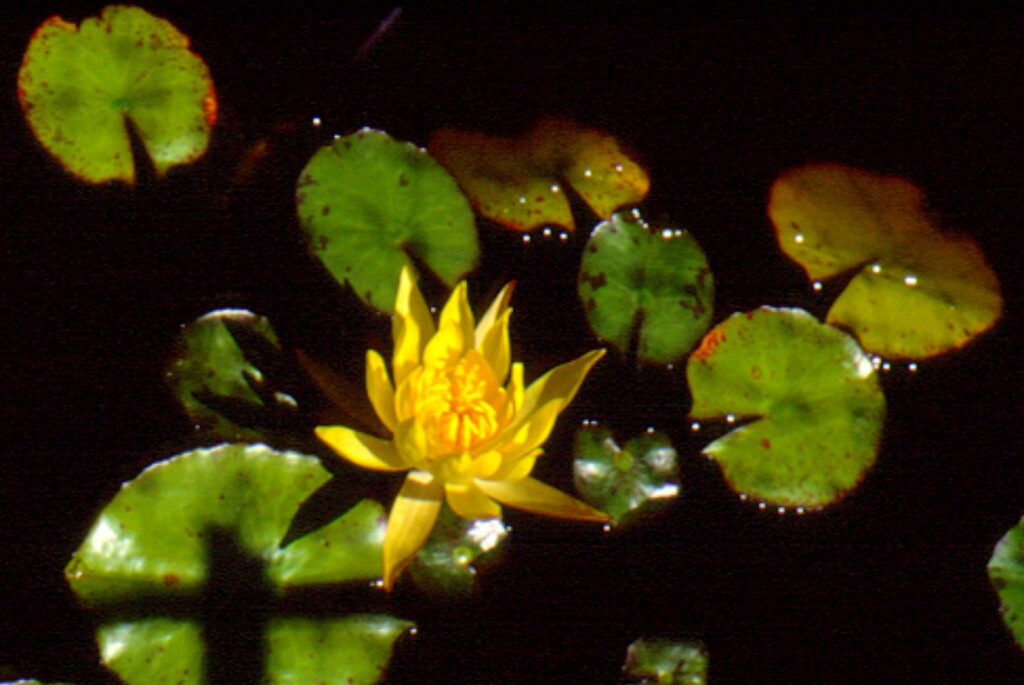Nymphaeaceae
Perennial or annual aquatic herbs with corm-like stems, rhizomes and occasionally stolons. Leaves alternate, usually radical, simple, broad-linear to orbicular, cordate or peltate, submerged or floating, long-petiolate. Flowers axillary, solitary, actinomorphic, bisexual; sepals 4–6, wholly or partially free; petals numerous, often large and colourful, sometimes reduced and apparently absent, often gradually passing into stamens or staminodes; stamens numerous, free or rarely fused to petals; ovary superior to inferior, consisting of 3–many fused, or rarely partly free carpels; ovules 1–many per carpel; stigmas united into a disc with radiating rays. Fruit a berry; seeds numerous, arillate or exarillate.
6 genera with c. 80 species, chiefly in tropical regions but extending to temperate regions; 2 genera in Australia.
Willis (1973) notes the presence of Nuphar lutea (L.) Sibth. & Sm. (European Yellow Waterlily or Brandy-bottle) in the Ornamental Lake at the Royal Botanic Gardens Melbourne (where now eradicated) and apparently not yet naturalized in Victoria. It is a frobust perennial with broadly elliptic, overlapping leaves to 30 cm or more long, bright yellow flowers to 8 cm diam. that rise above the water, and flask-shaped fruit 3.5–6 cm long that ripen above water.
Jeanes, J.A. (1996). Nymphaeaceae. In: Walsh, N.G.; Entwisle, T.J., Flora of Victoria Vol. 3, Dicotyledons Winteraceae to Myrtaceae, pp. 30–32. Inkata Press, Melbourne.
 Spinning
Spinning


